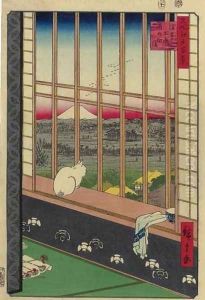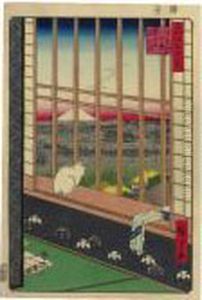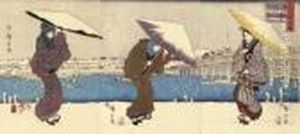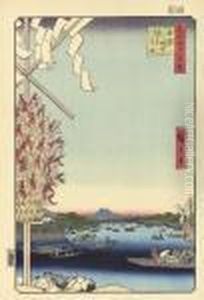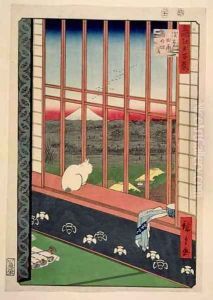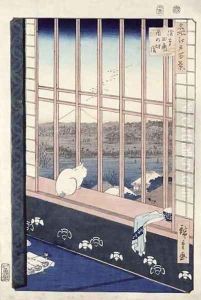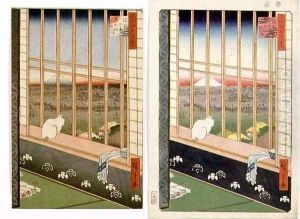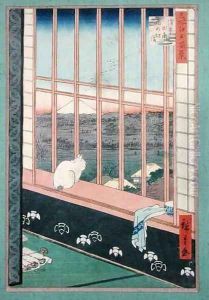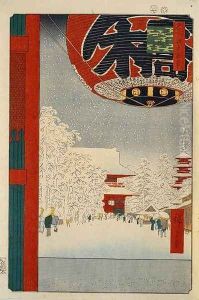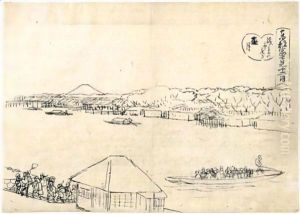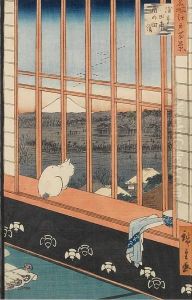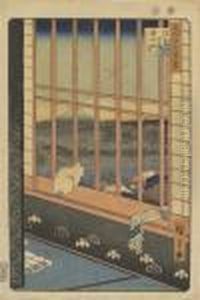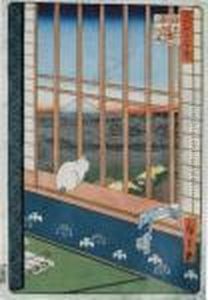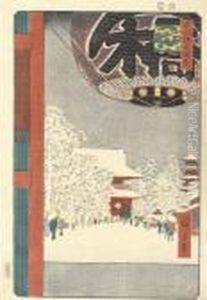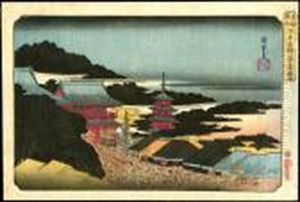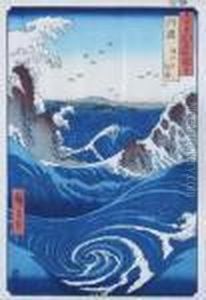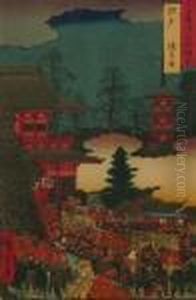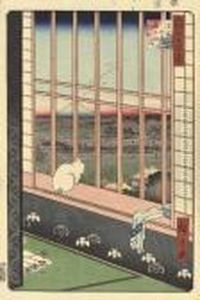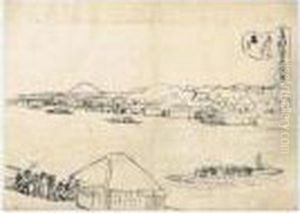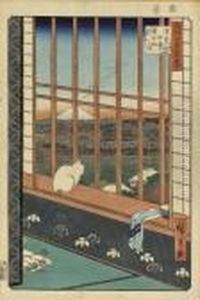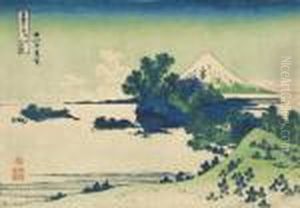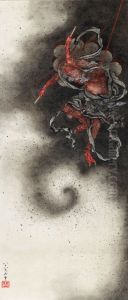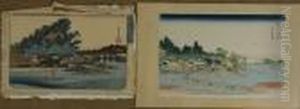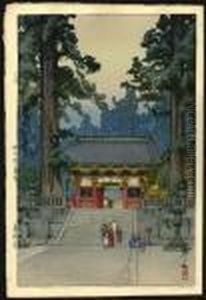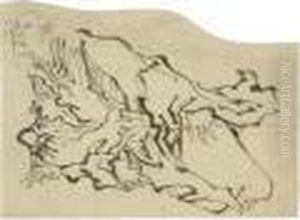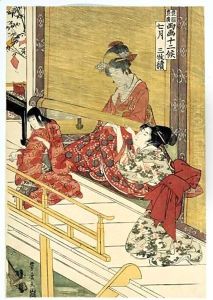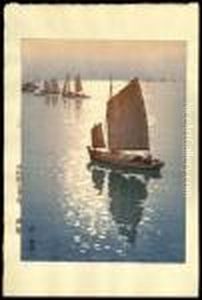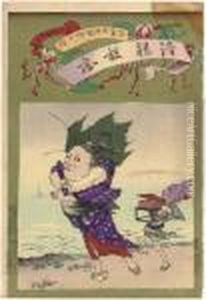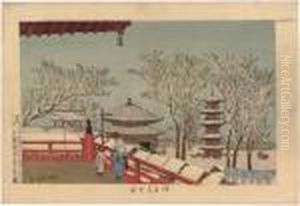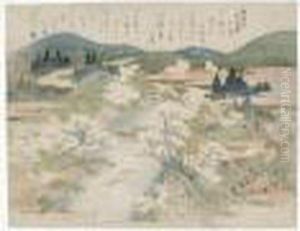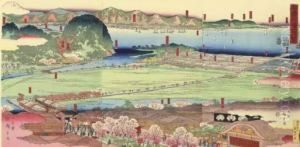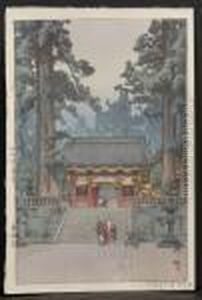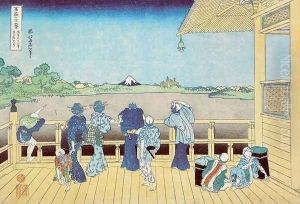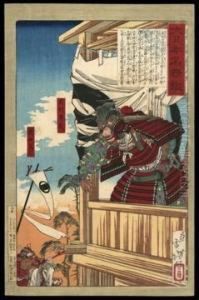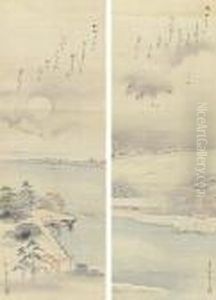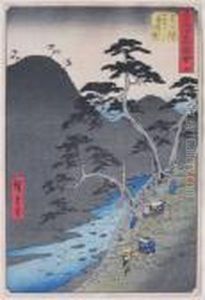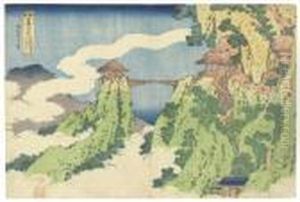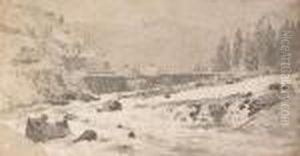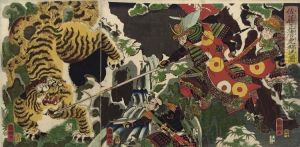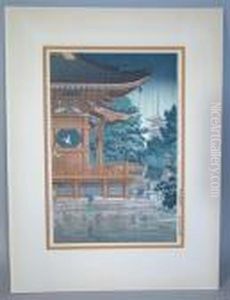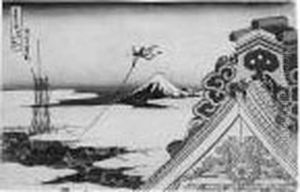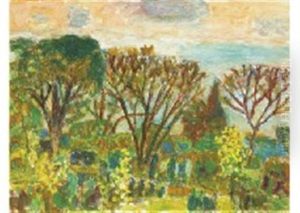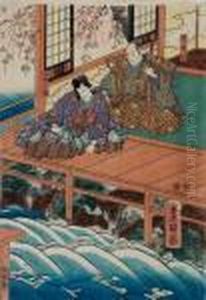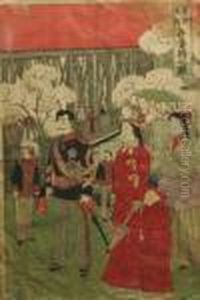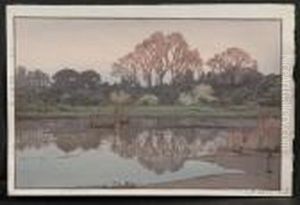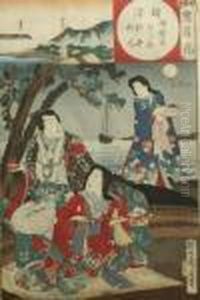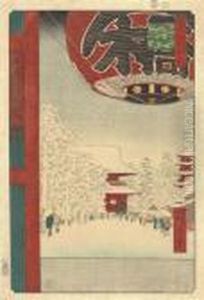





Asakusa
-
About Reproduction
Bring the timeless beauty of Utagawa or Ando Hiroshige's Asakusa into your home with a handmade oil painting reproduction. Carefully recreated on canvas by skilled artists using traditional techniques, this piece captures the delicate brushwork, subtle light, and vibrant color of the original masterpiece. With museum-level quality and rich texture, it brings elegance and artistic depth to any space. Enjoy free shipping and make this masterpiece a part of your personal collection.
-
Original Description
This iconic woodblock print by Utagawa Hiroshige (also known as Andō Hiroshige) captures the lively atmosphere of Asakusa’s Sensō-ji temple district during the Edo period. Created around 1856 as part of his One Hundred Famous Views of Edo series, the composition immerses viewers in a snowy evening scene, where umbrella-carrying figures traverse the lantern-lit Nakamise shopping street toward the grand Kaminarimon gate. Hiroshige’s masterful use of bokashi (gradated ink shading) creates a poetic interplay between warm golden light and cool indigo shadows, while delicate snowflakes enhance the tranquil yet festive mood. As a quintessential example of ukiyo-e landscape art, this work exemplifies Hiroshige’s genius for merging precise architectural detail with atmospheric storytelling. Its flattened perspective and seasonal sensitivity influenced European Impressionists like Van Gogh, cementing Hiroshige’s status as Japan’s last great master of traditional woodblock printing.
For interior styling, consider a gilded wood frame to complement the print’s warm lantern glow, ideally hung at eye level in an entryway or study to recreate the welcoming procession effect. The 39×26 cm standard ukiyo-e size works well as part of a gallery wall with other Edo-period prints or minimalist modern spaces needing organic warmth. Pair with washi paper lamps and natural materials like woven tatami mats to honor its heritage, while the dominant indigo-blue tones harmonize beautifully with walnut furniture or dove-gray walls. In offices, it serves as a sophisticated focal point behind desks—its balanced composition and historical gravitas subtly enhance professional environments. For larger spaces, opt for museum-grade reproductions scaled to 60×40 cm to amplify Hiroshige’s intricate details without overwhelming contemporary décor.
-
Lead Time & Shipping
When you order this oil painting replica, it typically takes 2-3 weeks to paint. If the artwork is more complex, it might need a little more time to ensure the best quality. Once it's ready, we'll send you a photo for your approval. After you give the green light, we'll ship it to you for free.
-
Return & Refund
We believe in the quality of our hand-painted oil painting reproductions, and your satisfaction is our priority. If for any reason, you are not completely satisfied with your purchase, we offer a 45-day return policy. You can return your artwork within 45 days of receipt and receive a full refund. Please note that the artwork must be returned in the original packaging and in the same condition as it was received.





















